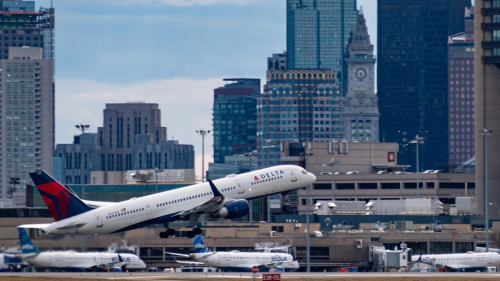If there’s a Boston building with a storied history, chances are Matthew Dickey has documented it.
We chatted with the Dorchester resident behind one of our favorite Instagram accounts, @streetscapecurator. The Illinois native moved to Boston in 2011 and is now the Director of Communications and Operations for the Boston Preservation Alliance.
He bikes around Boston to explore hidden gem buildings + share the histories of everything from triple deckers in Roxbury to narrow homes in South Boston and even the building that’s now home to Beacon Hill Books & Cafe.
Matthew also helped create the “Tour Your Boston” project, featuring stories from Dorchester middle school students who interviewed local business owners + residents.
Can you talk a bit about your Instagram account?
Me going around taking photos of buildings is just me wanting to know more about these places, researching more, and sharing that history with others. Lots of times, you get a whole bunch of other people who know a little bit more that I don’t know, and they can add on another layer and fill in those gaps. It’s just become a really cool and interesting community.
My very first photo I ever took on there, I’m not sure if it’s still there, is a house that’s in Savin Hill that no longer exists. It’s kind of cool to have it documented.
What does your job with the Preservation Alliance entail?
It’s basically the day to day making it run, and then sharing all of the stories and meeting people — really, my job is to be an extrovert.
I just finished wrapping up doing a series of films for our preservation awards, where we give out six awards each year. It’s really cool to be able to see the behind the scenes scoop on lots of parts of Boston.
What are your go-to resources for learning the history of these buildings?
My first tool that I use is just my eyeballs on the street. My second tool is the Atlascope, which is made from the Leventhal Map Center at the Boston Public Library. The Atlascope layers all the different years in a layer above current day Google Maps. That’s one tool I love because it can give you a sense if a building was built after that time and what the uses were for the buildings. For example, I just shared about the new bookstore on Beacon Hill, and there was a globe making shop there, which was cool.
Another one is the MACRIS, or Massachusetts Cultural Resource Information Systems. Massachusetts is a really good state because it allows anybody to access the documents and has them all digitized. It’s a great starting point.
If you’re going down even narrower, there is a really amazing website called Back Bay Houses. It’s run by a resident of the Back Bay and they’ve documented the deed histories of every single property in the neighborhood.
Could you share a quick overview of the history of Boston’s architectural style?
I guess 1661 would be the oldest building. If you think about the oldest physical building that you can see, you think about Boston being more of a British neighborhood plan. There are lots of smaller design spaces, kind of like a patchwork quilt. That takes hold for centuries, until we get larger scale places built on man made land, which really change the way the city looks. Then, there was a massive fire in 1872, so all buildings downtown were mostly brick and stone after that. Then, you get spaces that spread out from there in the later 1800s. When there was the big immigrant boom, you get the triple decker. That reigns supreme up until the 1930s or so. Then you get to your skyscrapers, high rises, and you start get what you think of as a contemporary city.
Do you have a favorite building in Boston?
That changes all the time. I have a couple, and they tend to be houses, because I tend to enjoy things that are smaller and well designed rather than an abundance of mediocrity.
There was one that I discovered that I really loved, it was just a row house tacked onto the end of another row of row houses and at first look, it just blends in and you don’t even see that it exists there. Then when you really pay more attention, you these see that there are larger windows and it curves around the corner out of sight to make it so you don’t break up the facade of the row homes. I have no idea who built it, but it’s in the Frederick Douglass Square Historic District.
The other one is in the North End, next to the Old West Church. It’s down a little alleyway, and there was an empty plot next to it. There’s an older brick facade building there and they built this glass and metal box that attaches to the new building, it looks so cool. That sums up what I love — when you adapt historic architecture and reuse it for other purposes. A mixture of old and new is what I really enjoy in all architecture.










